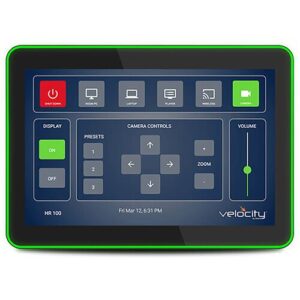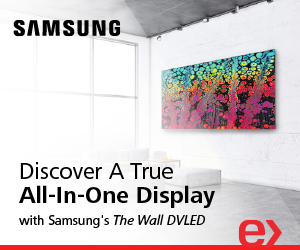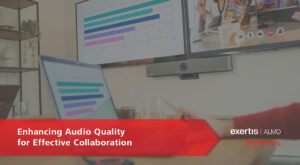Leveraging Distributor and Manufacturer Services in the AV Industry
As the Exertis Almo Business Development Manager for the Panasonic Connect product line, I have familiarity with the Panasonic service offerings and the Exertis Almo Professional Service offerings. It’s interesting that there’s so much demand for service offerings today – I remember 10 to 15 years ago when distributors started coming up with service offerings for the reseller community.
There was so much controversy about both the distributors and manufacturers going direct and their intent was to replace the value add of the reseller. Over time, that was quickly considered false. In fact, many of you quickly jumped on the opportunity to use both distributor and manufacturer service offerings to expand your business. Today, it’s much more accepted practice to leverage both the manufacturer and distributor for assistance.
Do manufacturers and distributors compete with one another for service offerings? I decided to reach out to do some personal exploration on just this topic, and the short answer is no.
 Let’s explore the differences between distributor and manufacturer services and how they can complement each other to unlock value.
Let’s explore the differences between distributor and manufacturer services and how they can complement each other to unlock value.
First and foremost, we must understand the different approaches between distributors and manufacturers when it comes to their service offerings. At the core, manufacturers focus on providing services that are tailored to their specific products. Whether providing support for installation, troubleshooting, maintenance, and beyond, their aim is to ensure that their customers have a seamless experience with their technology.
On the other hand, Exertis Almo takes a broader approach to professional services. Rather than being associated with a specific product line, we deliver a holistic approach, meaning we can address the AV system as a whole, irrespective of the brand or manufacturer, while focusing on the best outcome for the customer.
In turn, our services provide the convenience of having a single point of contact for a wide range of products and services. In my conversation with Cory Allen, VP of Services at Exertis Almo, we discussed the comprehensive approach to distributor service offerings.
“From implementation to commissioning and closeout, one entity can confidently take over the whole system to provide assistance,” he explained. “We are one, single partner that they can rely on to confidently service each part of that entire solution.”
From large integrators to small integrators (and everyone in between), we strive to help our customers grow with our resources and provide them with support knowledge about each piece of technology within their entire setup.
“We serve as a single source for a myriad of products and services, and no matter where you’re located and no matter your product, we can help you,” said Allen.
 Like distributor services, manufacturer services focus on creating a long-lasting relationship with customers by delivering support for all products within their brand. In my conversation with Michael Walton, Executive BDM for Services & Engineering for Professional Imaging and Visual Solutions at Panasonic, he provided key details regarding Panasonic’s approach to their service offerings.
Like distributor services, manufacturer services focus on creating a long-lasting relationship with customers by delivering support for all products within their brand. In my conversation with Michael Walton, Executive BDM for Services & Engineering for Professional Imaging and Visual Solutions at Panasonic, he provided key details regarding Panasonic’s approach to their service offerings.
The manufacturer’s mission is to create a relationship with the end user through engineering services to support and complement their knowledge base.
“This is all particular to the Panasonic ecosystem,” Walton said. “All of those pieces need to work in concert with each other, so Panasonic can support those products as a full ecosystem.”
In the case where there is an outside product within a Panasonic ecosystem, the distributor can step in and quarterback the situation.
As a unique offering specific to their product lineup, Panasonic provides a branding service for customers to receive personalized technology that aligns with their particular brand identity. This service utilizes color matching to allow customers to change the color of Panasonic technology to fit the room design. This service is an ideal option for corporate spaces and educational institutions looking to incorporate specific colors and vinyl decals into their classroom technology, or for spaces that require technology that blends in with its surroundings. This service is notably popular for projectors, and usually takes around 5-10 business days to complete. And the best part – all warranties remain.
So, how can you leverage both manufacturer and distributor services?
While manufacturer and distributor services may differ in their scope and focus, both strive to develop a lasting relationship with their respective customers. And as the industry continues to evolve, manufacturers and distributors alike are constantly seeking new ways to add value. From innovative service offerings to proactive maintenance solutions, the focus remains on delivering exceptional experiences and fostering long-term partnerships.
My takeaway from this quick review – they do not compete with one another. In fact, they both have developed viable service offerings for you, the reseller, to leverage both to grow your business without increasing your overhead or cost structure – all while providing high quality service.
Looking to learn more? Connect with me to get the details on Exertis Almo Professional Services and extensive Panasonic Connect lineup.

Angie Greene | DSCE
Business Development Manager
Supported Manufacturers: ScreenBeam and Panasonic












